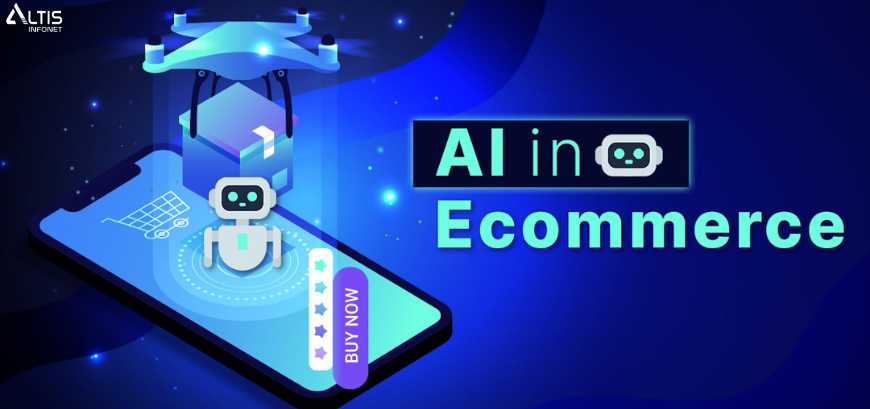Artificial Intelligence (AI), particularly in the fields of Natural Language Processing (NLP) and Machine Learning (ML), has embarked on an extraordinary transformative journey, showcasing limitless possibilities. Among these advancements, OpenAI’s GPT-4 has emerged as a state-of-the-art language processing AI, demonstrating exceptional capabilities in generating human-like text.
The Birth of a Revolutionary Idea: Creation of a Prompt Generator
As an organization that provides IT solutions, we have embarked on an inspiring quest to unleash the dynamic potential of this powerful model. Starting with the simple task of answering questions, summarizing text, and generating code, our journey has expanded to encompass a diverse range of web applications, all built on the ingenious principle of manipulating “the prompt”—the guiding instruction or question directing the AI’s content generation.
Crafting a Prompt Generator: An Epiphany
Initially, we noticed a significant lack of personalized fitness plans for fitness enthusiasts, which prompted us to dig into the capabilities of GPT-4. The solution to this problem materialized in the form of a Flask application that leverages GPT-4’s prowess to create tailor-made fitness plans.
The concept was simple yet powerful: users provide their unique learning goals, current skill level, target skill level, and desired timeframes, while GPT-4 generates a comprehensive study plan encompassing resource recommendations and milestone markers. However, the true magic lay in the execution, revolving around a meticulously constructed prompt—an encoded instruction for the AI to generate the desired output.
Revolutionizing App Development: The Versatility of GPT-4
Upon witnessing the success of the study plan generator, a groundbreaking realization dawned upon us —GPT-4’s immense power could be harnessed across a range of applications. If a single prompt could facilitate the creation of personalized fitness plans, why not explore other prompts capable of generating entirely different applications? The core of GPT-4’s versatility resided not only in its ability to generate high-quality text but also in its adaptability to varying prompts.
Merely by altering the prompt, we effortlessly transitioned from developing fitness plans to crafting study plans, custom web content, blog entries, personalized emails, and interactive chatbots. This approach revolutionized the app development process by significantly reducing the time and effort traditionally required, leading to exponential gains in efficiency and dynamism.
The GPT-4 Advantage: Revolutionizing Traditional App Development
In an era where user demands and expectations continuously evolve, developers face the challenge of meeting these needs innovatively. By harnessing the potential of GPT-4, we embarked on a journey to achieve precisely that.
The true beauty of GPT-4 lies in its ability to follow user’s intentions simultaneously making it truthful and generating less offensive output. As exemplified by the development of the study plan generator, manipulating the AI’s prompt opened a load of potential applications. However, the impact of GPT-4 extends beyond content creation. By utilizing this technology in chatbots, customer service, and other interaction-based platforms, GPT-4 has the potential to enhance digital interactions by making them seamless, natural, and user-centric.
Looking ahead, this approach could standardize app development, enabling developers with limited resources or capacity to produce vast amounts of content to partake in the process. Consequently, the implications of GPT-4-driven applications transcend their immediate functionality, serving as blueprints for an intelligent, versatile, and user-focused wave of applications that can transform industries and redefine our digital interactions.
The Power of the Prompt: A Technical Dive
To fully comprehend the transformative potential of this approach, it is essential to grasp the mechanics behind prompt creation. A GPT-4 prompt should explicitly be outlining the desired output format and content. The model’s response heavily depends on the phrasing of the prompt, thus clarifying expectations results in more accurate outcomes.
Recognizing the Limits: Knowledge Cutoff and Complex Prompts
Despite its remarkable capabilities, GPT-4 possesses certain limitations. The model has a knowledge cutoff, representing the point at which its training data ends. For GPT-4, this cutoff occurred in September 2021, implying that it lacks information on events that transpired thereafter. Consequently, GPT-4 might not be the optimal choice for applications necessitating up-to-date information.
Mastering the art of prompt creation demanded extensive testing, meticulous fine-tuning, and an in-depth understanding of GPT-4’s interaction dynamics. Each prompt served as an experiment, bringing me closer to comprehending the idiosyncrasies of AI. Over time, through persistent trial and error, I succeeded in crafting prompts that consistently produced reliable results, thereby transforming GPT-4 into a predictable and invaluable asset for my applications.
Charting the Path Ahead: The Infinite Potential of GPT-4
Overcoming these challenges has opened a gateway to endless possibilities. The power and adaptability of GPT-4, coupled with thoughtful application development, unlock a new realm of dynamic and user-friendly apps.





